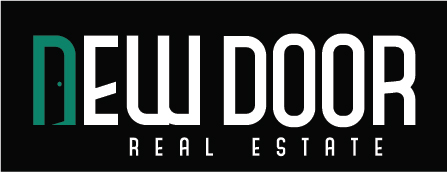Boost Your Online Store with the Best Ecommerce React Js Template
In today’s digital world, having an online store is more essential than ever. Whether you’re launching a new eCommerce business or revamping an existing one, using the right tools and technologies can make a significant impact. One of the most powerful solutions available is an Ecommerce React Js Template. These templates streamline the development process, enhance user experience, and improve website performance.

In this blog, we will explore the benefits of using Ecommerce Templates, focusing on React.js-based solutions. If you’re a developer, entrepreneur, or business owner looking for a cost-effective and scalable eCommerce solution, this guide is for you.
Why Choose an Ecommerce React Js Template?
React.js has become a leading technology for building web applications. It is fast, scalable, and backed by a strong developer community. When it comes to eCommerce, React-based templates provide numerous advantages:
- Speed and Performance: React.js is known for its fast rendering using the Virtual DOM. This results in a seamless and responsive shopping experience for users.
- Modular and Reusable Components: React’s component-based structure allows developers to reuse code, making development more efficient and consistent.
- SEO-Friendly: With proper optimization and tools like Next.js, React-based eCommerce websites can be highly SEO-friendly, ensuring better search engine visibility.
- Customizability: Ecommerce Templates built with React.js are highly customizable, allowing businesses to tailor their stores according to brand identity and user needs.
- Cross-Platform Compatibility: Many Ecommerce React Js Templates are designed to work seamlessly across different devices, ensuring a consistent shopping experience.
Top Features to Look for in an Ecommerce React Js Template
When selecting an Ecommerce React Js Template, there are key features you should prioritize to ensure a smooth and effective eCommerce experience.
1. Pre-Built UI Components
A good template should come with pre-designed components such as product listings, cart pages, checkout processes, and user dashboards. This reduces development time and ensures consistency across your platform.
2. Payment Gateway Integration
Secure and seamless payment processing is crucial for any eCommerce store. Look for templates that support PayPal, Stripe, or other payment gateways.
3. Product Management System
A robust product management system allows store owners to add, edit, and organize products efficiently. Features like filtering, sorting, and search functionalities enhance the shopping experience.
4. SEO Optimization
Since online visibility is essential for eCommerce success, choose a template optimized for search engines. Features such as fast-loading pages, meta tags, and structured data can help improve rankings.
5. Mobile Responsiveness
With a significant portion of online shoppers using mobile devices, your template should be fully responsive to different screen sizes.
6. Multi-Language and Currency Support
For global businesses, multi-language and currency options help cater to international customers, improving the overall user experience.
Best Ecommerce React Js Templates to Consider
There are several high-quality Ecommerce Templates available in the market. Here are some of the top React.js-based options:
1. React Next.js eCommerce Template
Built with Next.js, this template offers great performance, SEO optimization, and server-side rendering for enhanced speed.
2. Material UI eCommerce Template
This template uses Material UI for a sleek and modern design, making it perfect for tech and fashion stores.
3. Tailwind CSS React eCommerce Template
For those who prefer a lightweight and customizable solution, a template using Tailwind CSS offers flexibility and speed.
4. React WooCommerce Template
If you’re integrating with WordPress, a React WooCommerce template can help merge the power of React with the flexibility of WordPress.
How to Get Started with an Ecommerce React Js Template
Getting started with an Ecommerce React Js Template is easier than you might think. Here’s a simple step-by-step guide:
- Choose the Right Template – Consider your business needs and select a template that best fits your brand.
- Install Dependencies – Follow the documentation to install necessary dependencies like React, Redux, or Next.js.
- Customize the Design – Modify the UI components, colors, and layouts to align with your branding.
- Integrate Backend and Database – Connect the template to a backend service like Firebase, MongoDB, or a headless CMS.
- Optimize for SEO – Implement best SEO practices, such as adding meta tags, improving page load speed, and structuring URLs correctly.
- Test and Deploy – Run thorough testing to ensure a smooth user experience before deploying your store.
Final Thoughts
Using an Ecommerce React Js Template is one of the smartest ways to build a modern, high-performing online store. With features like modular components, SEO optimization, and responsive design, these templates help businesses launch faster while maintaining a high level of quality.
Whether you are a developer looking to speed up project completion or a business owner aiming for a cost-effective eCommerce solution, React-based Ecommerce Templates provide the perfect foundation. Choose the right template, customize it to fit your brand, and start selling online with confidence!

Are you ready to elevate your eCommerce business with a React.js template? Explore different templates and find the one that best suits your needs!




